8+ Sample Procurement Management Plan
-
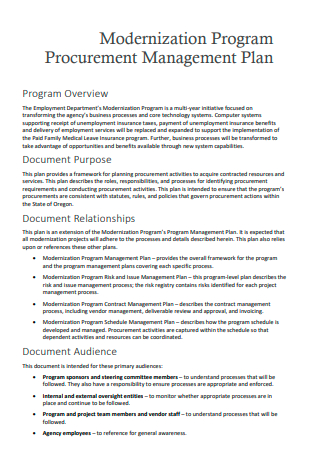
Modernization Program Procurement Management Plan
download now -
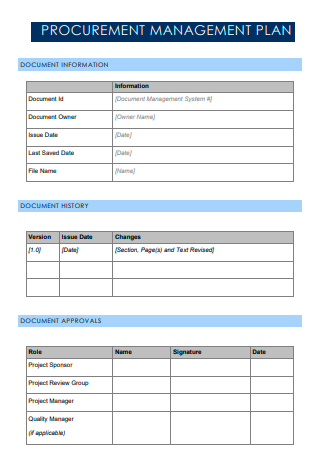
Basic Procurement Management Plan
download now -
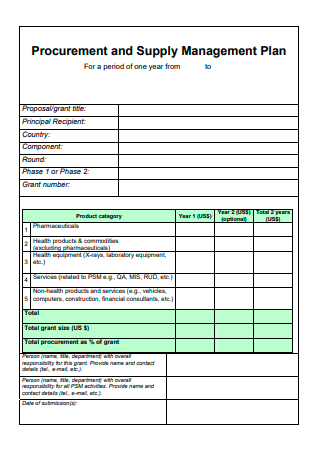
Procurement and Supply Management Plan
download now -
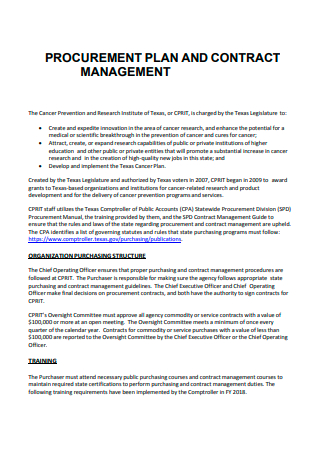
Procurement and Contract Management Plan
download now -
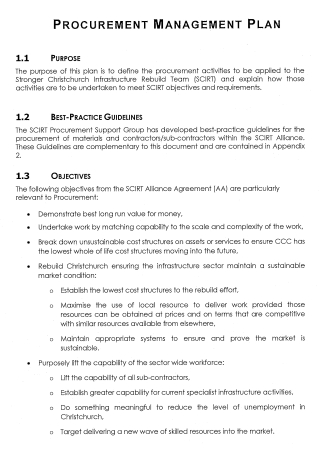
Procurement Management Plan Example
download now -
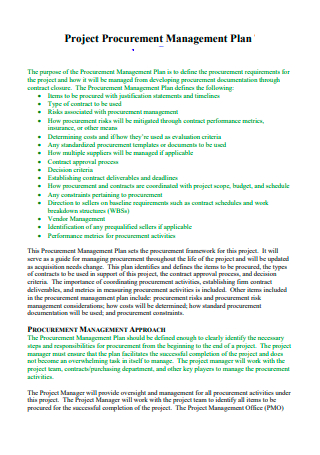
Project Procurement Management Plan
download now -

Local Procurement Management Plan
download now -
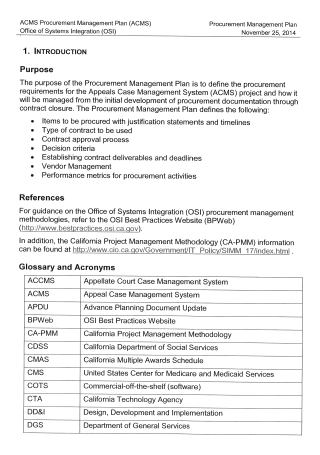
Standard Procurement Management Plan
download now -
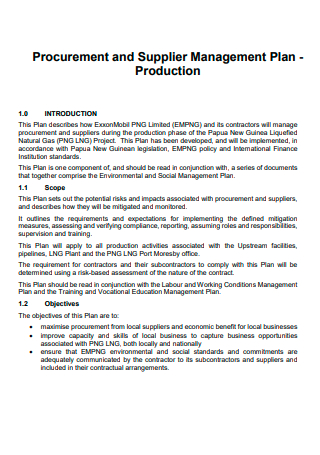
Procurement and Supplier Management Plan
download now
FREE Procurement Management Plan s to Download
8+ Sample Procurement Management Plan
What Is a Procurement Management Plan?
Components of a Procurement Management Plan
How To Create a Procurement Management Plan
FAQs
What are the four main processes of a project management plan?
What is a procurement plan?
What is the main purpose of procurement management?
What Is a Procurement Management Plan?
A procurement management plan is a business plan that identifies and defines the specific requirements for a business project, laying down the necessary steps towards getting into the final agreement or contract. It involves the entire project process, from drafting and collecting the necessary documents leading to the signing of the contract. The project that the procurement management plan describes refers to the procedure of purchasing and obtaining products and services within the industry of the organization. The procurement management plan aims to set and define every aspect of procurement, including the procured items, associated contracts, contract approval process, cost determination, and conclusion criteria. In simple terms, the procurement management plan serves as the framework for a project. It acts as a guide for the organization and the stakeholders throughout the project timeline. Remember that the procurement management plan is flexible. The business can modify, revise, and enhance the document throughout the project according to the changes happening for smoother business operations.
According to the Supply Chain Magazine, more or less 73 percent of contract management processes are under the execution of silos. These silos refer to finance leaders and procurement teams that communicate between different documents and other sources of information to get the essential data they need to move forward, more likely losing most of the documents and giving up along the way.
Components of a Procurement Management Plan
Procurement management plans play a vital role in the operations of an organization. It documents how a project unfolds through its purchasing decisions. It is a component that deals with the external procurement process for a particular project. Procurement management plans are separate from statements of work or terms of reference in the sense that they focus more on overall strategies and vendor management. This section of the article describes different and essential elements of a procurement management plan with descriptions to understand them better.
How To Create a Procurement Management Plan
Procurement management plans take time to develop and require much thought. The project manager holds the responsibility of overseeing the entirety of the procurement management plan, but it does not mean they are the only ones who work. Procurements are project-wide, and everyone must be on the same page as it involves approving and managing contracts. The document is in a step-by-step process that identifies different parts of the project procurement process. A procurement management plan follows the steps below that you can use for your next project.
-
1. Define the Roles and Responsibilities of Individuals
The first step of building the procurement management plan is to identify the people working on the project. It guarantees that all members of the project team understand their responsibilities and the scope of work they handle. The step eases out the process that individuals need to fulfill while also setting boundaries to their roles to ensure there are no overlapping responsibilities and duplication of efforts. The section must identify the roles of different individuals, including the responsibilities of project managers, contract managers, corporate executives, vendors, and suppliers.
-
2. Develop a Work Schedule for Days of Operation
Scheduling the operation days for the project equates to setting up various timelines to accomplish work according to the project. Breaking out the tasks with a certain set of estimates of the start and end dates helps the organization better understand the procurement process and the dates of completion. You can use project management software to help manage and organize schedules in different task levels.
-
3. Identify and Mitigate Associated Project Risks
Risks are inherent to any task, plan, or project that the organization engages in to develop. These risks have a high probability of manifesting, and businesses encounter can still encounter them. A procurement management plan helps the organization to identify the types of risks and the possible occurrence and minimize their impact by setting up risk management plans. After creating a comprehensive list of potential risks, the plan you create helps mitigate them. Assigning a team member to deal with specific risks allows them ownership over closing.
-
4. Specify the Involved Costs
Determining costs is essential in the procurement management plan because it directly affects the project budget. The procurement process involves issuing a request for a proposal that asks the vendor for a bid proposal for products and services. The estimated costs in the proposal come from the project timeline, scheduled due dates, vendor work arrangements, instrument proposal, and project bids.
-
5. Establish a Decision Criteria and Approval Workflow for the Project
The fifth step of the procurement management plan explains the significance of creating the decision criteria and approval workflow for different contracts for the project. It helps the organization to specify the elements for the final approval of the plan, including proposal reviews, document analysis, and cost analysis. The detailed workflow ensures that the contracts during the procurement process undergo thorough evaluation and review before the final stage of approval. The decision criteria represent the standards vendors or suppliers must meet in each contract. It ensures the capability of these individuals to follow work schedules and provide the necessary products on time.
-
6. Set Up Vendor Management
Vendors are key stakeholders that are responsible for the success of the entire procurement process. This step identifies the strategies and protocols for managing the vendors. In this step, the organization ensures that the vendors or suppliers with detailed information about the type of work and delivery timeline to produce the goods. Vendor management includes processes that involve invoices, statements, and timesheets to produce better workflows and process responses.
FAQs
What are the four main processes of a project management plan?
When it comes to project management and procurement, it involves four principal processes. These include planning, selection, administering, and closing procurements.
What is a procurement plan?
A procurement plan is another term for a procurement management plan. Similarly, it details all the procurements processes relating to finding and selecting a vendor or supplier.
What is the main purpose of procurement management?
Procurement management guarantees the items and services the company must acquire for the projects and processes to efficiently and successfully promote the plan. The process is also responsible for negotiations between suppliers or vendors to optimize the use of time, money, and resources.
Procurement management plans are essential documents to guarantee the success of a project. As it is, the document incorporates the step-by-step process of acquiring products or services from suppliers and vendors. Organizations must be familiar with the procurement management plan to guarantee that all their projects become successful by identifying the roles and responsibilities of team members, setting up work schedules, specifying risks and how to mitigate them, estimating costs, establishing criteria and workflow, and promoting vendor management. Start making a procurement management plan for your next project by downloading the 8+ SAMPLE Procurement Management Plan in PDF samples today!
